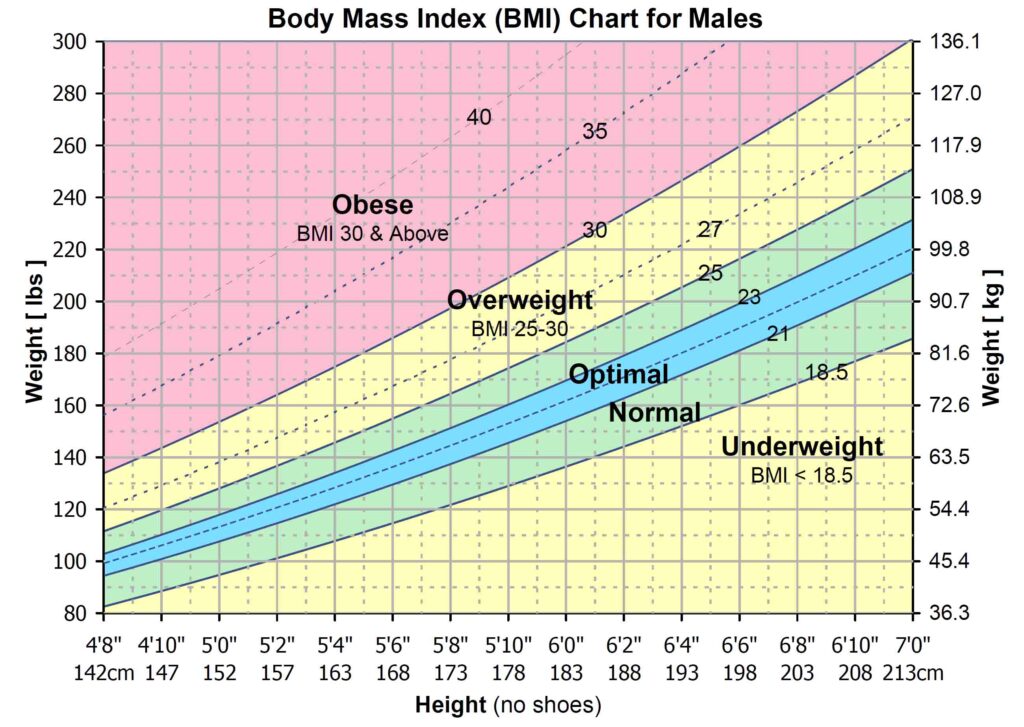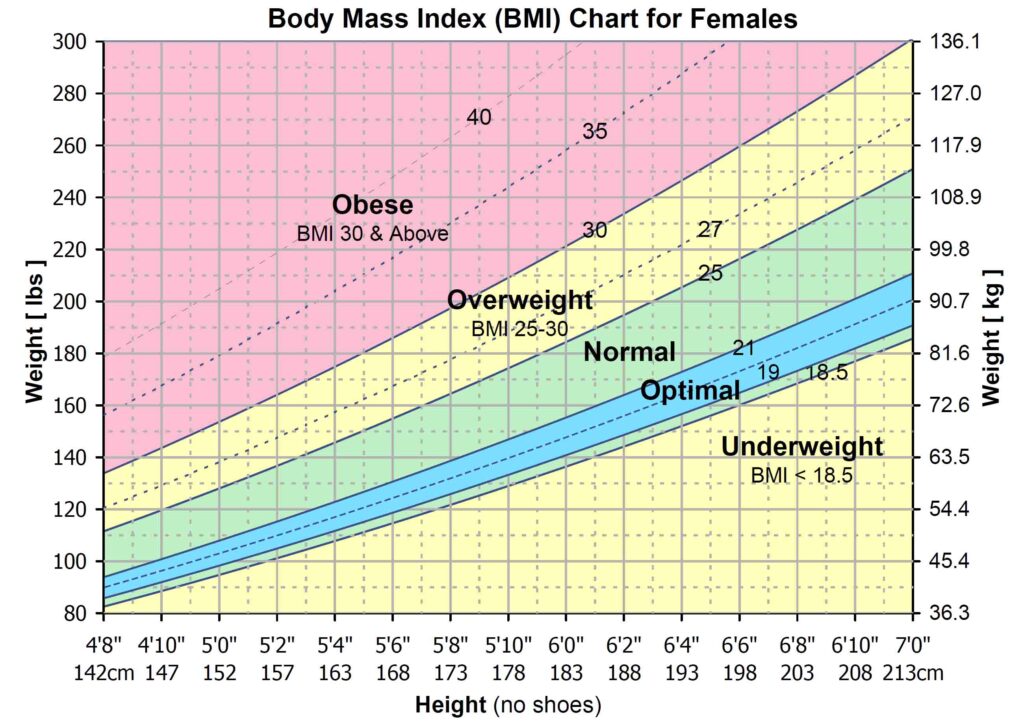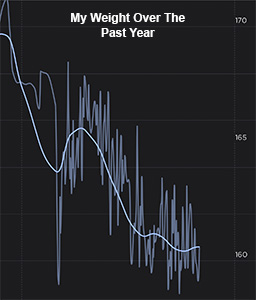Trying to determine my optimal body mass index (BMI) was harder than I thought. I want to live forever, disease-free, and happy. Inadequate body weight prevents that. But published BMI guidelines are vague and studies are conflicting. Why are current BMI recommendations unsatisfactory? What is the optimal BMI? And are there better metrics to reach these goals? Well, let’s get into it!
Normal BMI
BMI is your weight to height ratio reported as kg/m2 (BMI Calculator). It’s a quick and dirty way to estimate the fatness of an individual. The higher your BMI, the fatter you are. Excess body fat negatively affects lifespan and healthspan but too little is equally detrimental. So, what’s recommended? Below are widely recognized categories for underweight, healthy weight, overweight, and obese individuals. [1]

Unfortunately, many scientific studies disagree with the healthy weight category. A study published in 2015 looked at the association between BMI and death rate. They found little association with death all the way up to a BMI of 30[2]. You could be borderline obese and somehow healthy. This doesn’t add up. Excess body fat significantly increases the risk of cancer and heart disease. Our two leading killers. How could death rate not increase with higher BMI and body fat?
Obesity Paradox
This is the obesity paradox. “Although obesity is a major risk factor in the development of disease, obese patients may have a survival benefit.” Fatter the better, to a point.[3] If I just read this, I’d be shoveling in the calories. If fat is good, I want to be fat! My risk for disease would increase but my chance of surviving increases even more. Luckily, flaws in these analyses have been identified.

Heavy smokers have a low BMI but die early. The frail and elderly have a low BMI but die prematurely too. Many people who are severely ill, depressed, undernourished, or burdened by infectious disease cut their lifespans while being underweight. These frequent, unhealthy scenarios cause low BMIs to appear unhealthy. They’re not. These scenarios cause a low BMI. Low BMI doesn’t cause these scenarios. [4]
Optimal BMI
Removing these scenarios from the data provides a clearer picture. Fat isn’t good [5]. A good BMI is between 23 and 24 when excluding smokers. A better BMI is 22 to 23 among healthy, never-smokers. And if you look at longer follow-up durations, it drops even more. A BMI of 20-22 is best. This provides a clearer picture than the 18.5 – 24.9 range globally recognized. It also clearly opposes studies stating that obesity is protective. It’s not. But let’s take this one step further. I want optimal. [6]


Women carry more fat than men. Men more muscle. This is normal. But an equal BMI between sexes may not. A man is considered obese with body fat over 25%. A woman over 33%. A study correlating this with BMI shows a 2 kg/m2 difference between men and women [7]. This means men can weigh more without being considered overweight. It removes the sex bias. Other studies referencing median BMI differences and statistical fairness agree with these 2 kg/m2 differences [8, 9]. Equally adjusting the 20-22 best BMI by 1 in equal opposing directions gives us optimal BMIs per sexes. Optimal male BMI is 21-23. Optimal female BMI is 19-21.
Limitations
I’m 5′ 10″ and for most of my life, weighed 172lbs. That’s a BMI of 24.7. Normal but not optimal. Over the past year, with increased physical activity and stricter nutrition, I’ve dropped down to 159lbs. That puts me in the optimal category with a BMI of 22.8. I’m happy with that weight but it doesn’t tell the full story.

BMI provides guidance on the optimal weight. But it completely ignores what you do with that weight. Body builders or gym rats typically sit in the overweight category despite having low body fat percentages. Sedentary individuals could sit in the normal category while having high body fat percentages. Termed “skinny fat.” BMI also ignores the subcutaneous to dangerous visceral fat ratio. And waist circumference isn’t taken into consideration either [10]. BMI ignores body composition. That’s a problem.
Final Thoughts
BMI calculates your weight to height ratio. Despite all the noise, optimal BMI values tend to be between 19 to 21 for women, and 21 to 23 for men. This provides the best chance for a long, healthy, and happy life. This is the range I’m aiming for. But BMI has a problem. It ignores body composition, which could be even more important. Body fat, lean muscle, waist circumference, and bone density are disregarded. BMI may just be the first step of the puzzle. If you want to be notified about how to optimize body composition within these optimal BMI ranges, sign up for my newsletter below! I’ll be covering these topics soon. These are my latest habits for health excellence.

